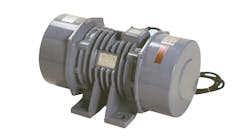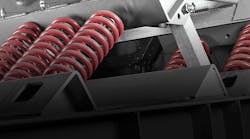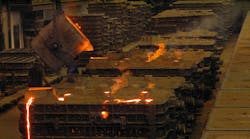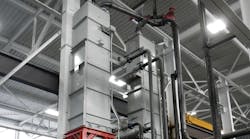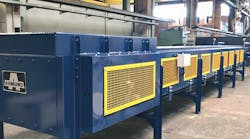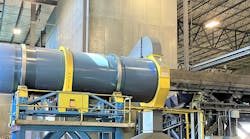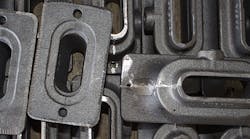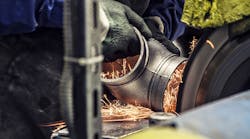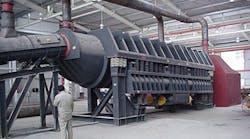When General Kinematics introduced its Portable Stroke Monitor app for Apple and Android devices earlier this year, it wasn’t just feeding techies’ yen for new gadgets; it was responding to foundries’ need to know that their equipment is up to spec with the latest performance standards. And, performance standards are not the only factor shaping operators’ decision-making. Regulatory standards are always looming on edge of any discussion about foundry equipment and processes.
Shakeout machines are a good example. The GK Stroke Monitor is evaluates the performance of vibratory equipment (of any brand or design) by monitoring the stroke of the machine. The user attaches a magnetic bluetooth sensor to the vibratory equipment and it immediately takes the measure of the operation, allowing the operator or maintenance personnel to see if the machine is running within factory specifications.
If the machine is out of spec, a performance log can be captured and emailed to GK for round-the-clock analysis by its customer service team.
Shakeout machine builders can supply lots of answers and solutions, but foundries have to know what problems are most important to address. General Kinematics is one a handful of designers and builders of vibratory and rotary equipment used to clean castings after they exit a sand mold. It’s standard equipment, but it’s a demanding process that must perform reliably, safely, and continuously. This means that the demands on the shakeout system, and the expectations of the operators, differs from one foundry to the next.
Think of the shakeout as an intersection of foundry processes. Basically, a molding line has one purpose, as does a furnace, but a shakeout system has to do at least two things: separate the casting from the sand. It also has to capture and handle the sand. The emphasis for GK’s Vibra Drum rotary system, for example, is on transferring heat from the castings to the sand, so that the castings cool and the sand is heated prior to reconditioning.
Peformance Priorities
So, some foundries will prioritize their system’s performance. That explains why another shakeout process developer, Carrier Vibrating Equipment, puts so much emphasis on equipment design. Its Delta-Phase shakeout comes with assurances of lower maintenance costs, reduced casting damage, and maximum sand removal. The core of this design is a process controller that directs the vibration angle control so operators can manage the conveyor speed and retention time of castings on the shakeout deck, to optimize sand removal.
Carrier’s Barrel Horse sand and casting processor is a rotary shakeout that allows castings to “swim” in sand to reduce damage from the lifting and tumbling action. This shifts the emphasis, to casting quality. The agitation and mixing method cleans castings in a gentle process that also reduces heat transfer.
The fact that shakeout machinery must coordinate different objectives (casting cleaning, sand handling) within a foundry’s performance goals (e.g., cost control, casting quality, environmental management) demonstrates how the choice of a shakeout installation influences the overall operation. That explains why Didion International emphasizes the multidimensional capabilities of its machinery.
Didion’s rotary systems include sand/casting separators, media drums, sand/metal reclaimers, sand blending/cooling drums, dross/slag reclaimers, sand screens, gate/sprue cleaners, dryers and scrap pre-heaters, and chemically bonded sand lump crushers. The Mark 5 Series rotary media drum Didion introduced in recent years combines a number of capabilities — sand and casting separation, sand blending/conditioning, sand screening, casting cleaning and cooling — in one machine. Because it handles different types of molding sand and different cast metals, all with reliability, it achieves a level of productivity that repays the investment quickly.
However, the choice of a shakeout system will depend less on how a machine performs than on how it fulfills the changing pressures on metalcasters’ overall operations, such as noise standards and especially crystalline silica capture. Machine designers already have some answers to those concerns, but it is for the foundry operators to determine how the options address their needs.
The design details of different shakeout machines demonstrate that the builders understand the multilateral demands on rotary systems. How those demands change will determine how the machinery performs.
